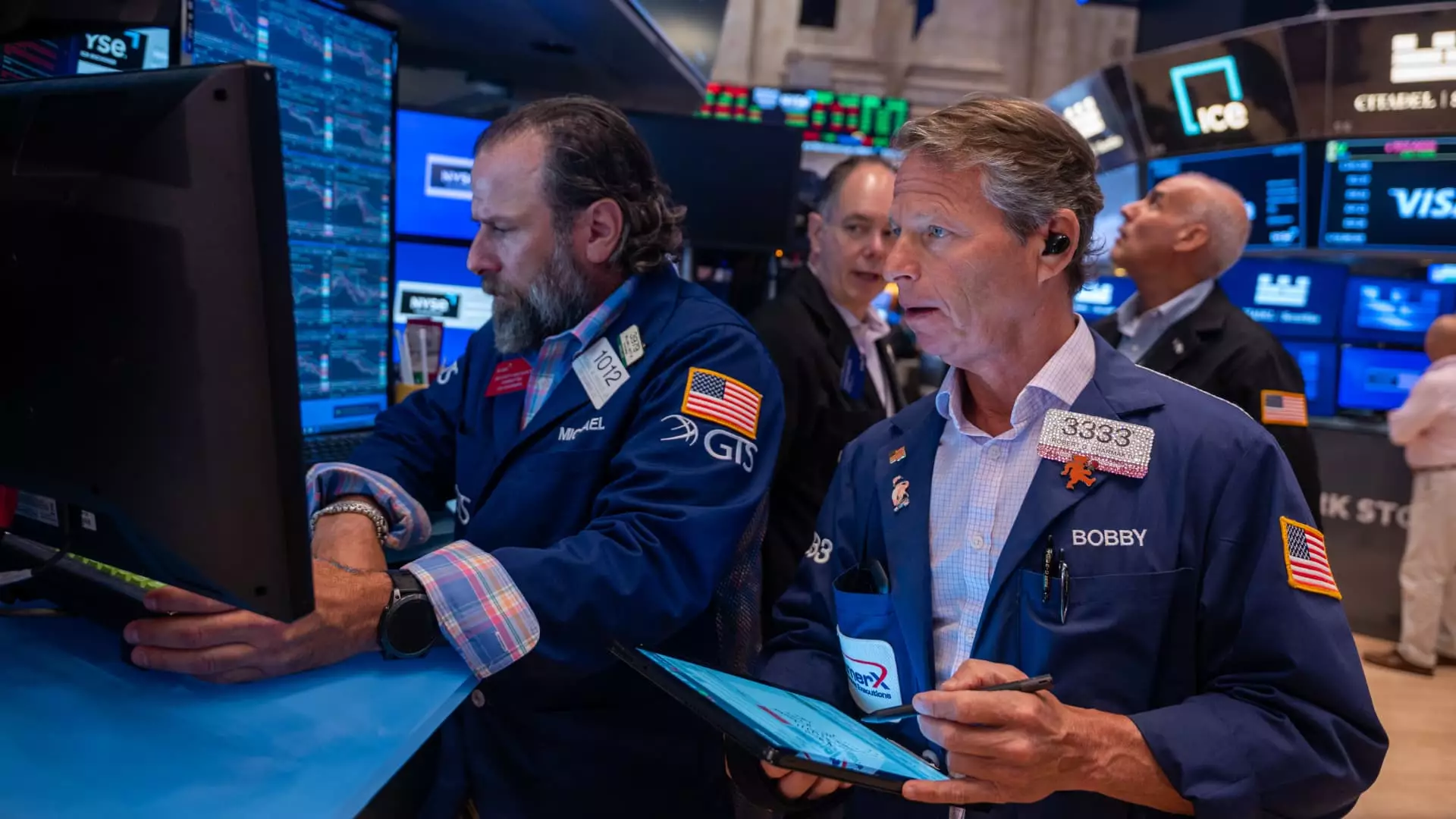The recent employment data paints a grim picture of an economy on the brink of decline, exposing the fragility of the current recovery narrative. The July report revealing only 73,000 added jobs—significantly below expectations—uncovers underlying weaknesses that cannot be dismissed as short-term fluctuations. Past revisions show a persistent decline—June’s growth slashed from 147,000 to a mere 14,000, and May’s from 125,000 down to 19,000—highlighting an alarming downward trend in employment. This sluggishness indicates a labor market that is losing momentum, possibly signaling that economic growth is stalling or worse, reversing. Such persistent underperformance challenges the mantra of a resilient economy, exposing the limitations of monetary and fiscal policies that seem increasingly ill-equipped to address the depths of this downturn.
Market Reaction: Fear, Not Confidence
The market’s response was swift and severe, with major indexes plunging—Dow down 430 points, S&P 500 dropping 1.6%, and Nasdaq tumbling 2.1%. These declines weren’t mere technical corrections; they reflected growing investor anxiety rooted in economic fundamentals. Bank stocks, traditionally seen as a barometer for economic health, nosedived—JPMorgan Chase, Bank of America, and Wells Fargo all declined sharply. The decline in industrial giants like GE Aerospace and Caterpillar further underscore fears of a prolonged slowdown in manufacturing and infrastructure investment. This collective sell-off indicates that investors no longer see the current environment as conducive for optimism; instead, they fear that the economy is deteriorating faster than policymakers can respond.
Federal Reserve’s Dilemma and Policy Gambles
The central bank finds itself trapped in a strategic quagmire. The recent employment figures, coupled with trade tensions, bolster calls for aggressive rate cuts—futures now price in a 66% chance of a September easing. Yet, the Federal Reserve’s cautious stance, led by Jerome Powell’s insistence on data dependency, appears increasingly out of step with economic reality. The Fed’s dilemma is compounded by the uncertain impact of tariffs, which, instead of protecting American industries, seem to serve as additional headwinds. Tariffs, especially the recent escalation, send ripples through global supply chains, raising costs for consumers and businesses alike. The new tariffs on Canada and transshipped goods are a vivid reminder of how protectionist policies ultimately hinder growth and undermine global economic stability.
The Politics of Protectionism and Its Fallout
The Trump administration’s aggressive tariff strategy, especially the escalated duties announced at the August 1 deadline, is a reckless gamble. While intended to safeguard specific industries or leverage negotiations, tariffs are proving to be a poison pill for economic growth. As goods face higher levies—up to 41% for certain products—and transshipped items are hit with a 40% surcharge, the costs inevitably trickle down to consumers and businesses. The notion that these punitive measures could force revised trade deals ignores the broader damage inflicted on supply chains, inflation, and market confidence. Remarkably, even close allies like Canada bear the brunt, with tariffs on imports rising sharply. This protectionist turn not only risks igniting retaliatory measures but also undermines the global trading framework necessary for sustained growth.
Tech Sector’s Contrasting Fortunes: A Sign of the Fraying Market
Within this turbulent environment, technology stocks offer a perplexing mix of signals. Apple’s gain, driven by strong earnings, temporarily lifts investor sentiment, but Amazon’s disastrous 7% plunge underscores the fragility of even dominant players amid economic headwinds. The tech sector, long hailed as a growth engine, now appears vulnerable to declining consumer confidence and cautious spending. The broader market’s inability to sustain gains, despite earnings from giants like Microsoft and Meta Platforms, exposes an underlying unease—markets may be promising but are increasingly disconnected from economic reality. This disconnect underscores a fragile optimism that could quickly turn sour if economic data worsen or if trade tensions escalate further.
The Stark Reality of a Potential Recession
Ultimately, these converging signals suggest we are teetering dangerously close to a recession—or perhaps already in its early stages. The consistent weakening of the labor market, the sell-off in financial and industrial sectors, and the unpredictable impact of tariffs constitute a perfect storm. Policymakers’ current course of action—whether premature rate cuts or continued protectionism—ignores the fundamental issues: an economy weighed down by misguided policies that prioritize short-term political gains over long-term stability. The hope for a swift recovery appears naive when the foundation beneath it is visibly cracking, revealing vulnerabilities that threaten to plunge the economy into a more profound crisis unless decisive, coherent action is taken to right the course.


Leave a Reply